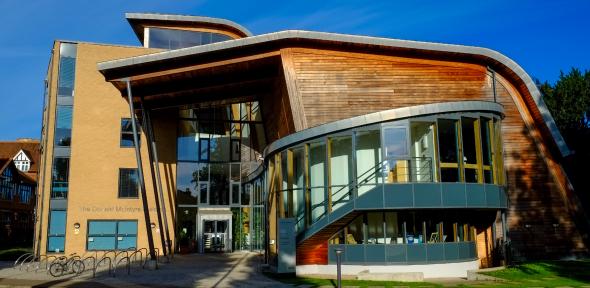
Recognizing that the issue has exercised scholars for over two millennia and has significant implications for educational policy, the ESRC has awarded Christine Howe, Neil Mercer and Sara Hennessy from the Faculty of Education a research grant of £343,214 to chart patterns of classroom dialogue and to examine their consequences for student learning and attitudes to school.
For at least two millennia, the form of dialogue that occurs in classrooms has been spotlighted as critical for teaching and learning. Throughout the period, hypotheses have been proposed about optimal forms, with many scholars highlighting a need for open questions; extended responses; cumulative building upon others’ contributions; discussion and evaluation of competing viewpoints; and gradual resolution of differences in a productive direction. However, despite its prominence in theoretical analyses, it remains uncertain whether classroom dialogue that takes this form is genuinely beneficial for student learning, and even if it is, whether the magnitude of benefit justifies making promotion an educational priority.
Within the UK (as elsewhere), answers are of the utmost importance. Dialogue in its broadest sense of verbal interaction is now an entrenched part of schooling: classroom talk is not limited to teacher monologue. When dialogue is entrenched, it is clear that, if its form does make a difference, it is already having significant consequences. It is critical to ensure that these consequences are optimal. So acknowledging the dearth of research and the urgent need for progress, the project will address the key issues, using dialogue recorded in c.80 Year 6 classrooms. Three successive lessons will be videotaped in each classroom, with lesson content being representative of the core curriculum.
Recordings will be coded and rated using a scheme that the research team is already developing. The scheme synthesizes the features with which scholars have characterized optimal educational dialogue, and while it goes beyond what any single analyst has proposed, it contains nothing that anyone would reject. In other words, it is a model of effective practice that all analysts can sign up to, and it will be used in the project to represent degrees of approximation to a ‘dialogic ideal’. It seems unlikely that any classrooms will reach the ideal. Published research together with the researchers’ experience suggests that some will nevertheless come close, while others will be nowhere near. The extent of approximation within the sample will be charted and specific areas of difficulty identified.
Analyses will then assess whether there is a positive association between approximation to the dialogic ideal and student learning, and if so whether its magnitude is sufficient to carry significant implications for policy. Adjusting if necessary to ensure that variation in dialogue is not confounded through association with other predictors of learning (e.g. prior achievement, socio-economic status), regression-style statistics will be used to assess the extent to which variation in dialogue predicts subsequent performance on objective, standardized and socially significant measures of performance, e.g. Year 6 SATS. While the focus is upon learning outcomes, the implications for student attitudes to school will also be examined.
